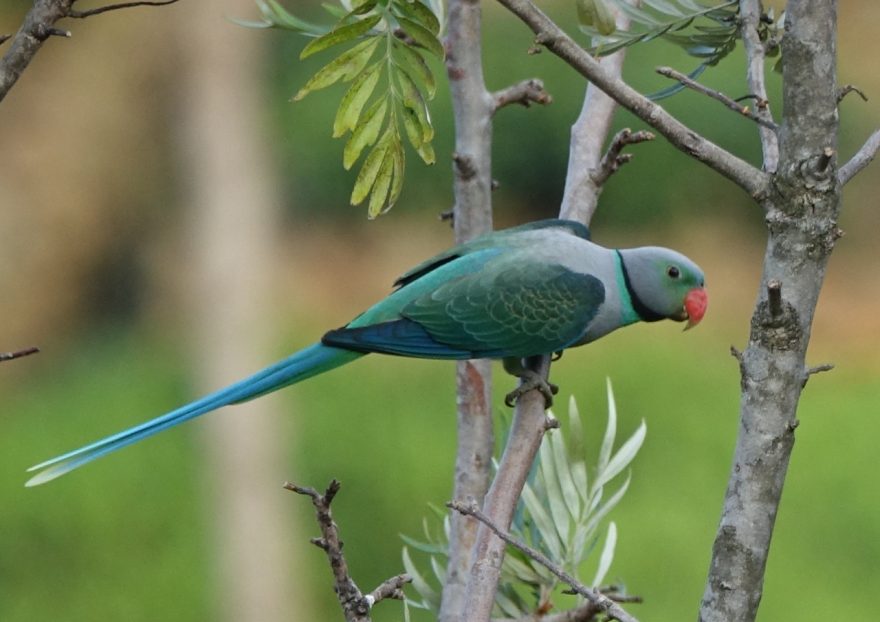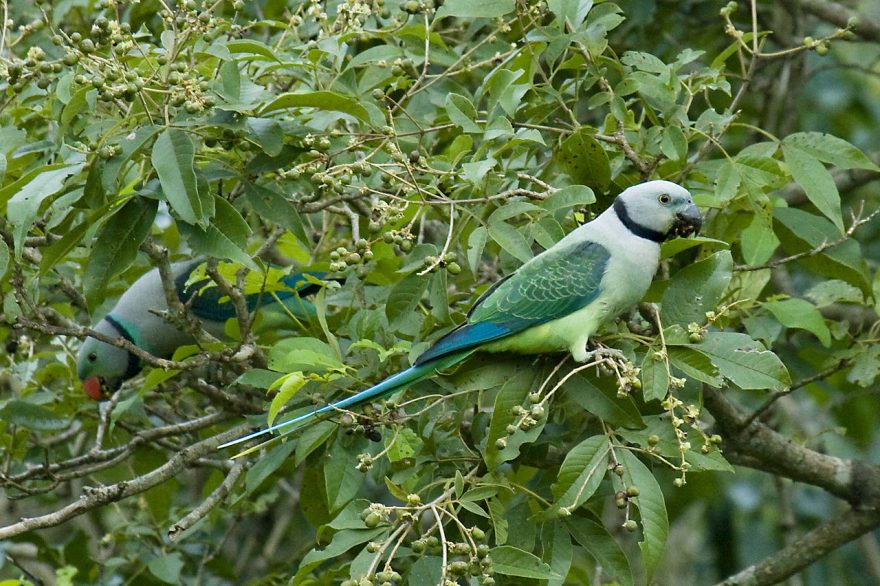The Malabar parakeet, known also as the blue-winged parakeet, is a medium-sized parrot found in the tropical forests of South-East India. Although the species is fairly common in its native range, they are rarely found in Australian aviculture, where they can demand several thousand dollars for a pair.

Housing & Compatibility
Malabar parakeets are poorly suited to a mixed collection and are best housed as one pair per aviary.
Malabar parakeets should be provided with an adequate amount of flying space to ensure they receive sufficient exercise. Birds that do not have room to fly may suffer from stress or obesity. They require a minimum of three meters of uninterrupted flying space.
Branches from non-toxic trees should be provided as natural perches. The birds will also enjoy chewing on bark, leaves and seeds for entertainment and beak exercise.
Malabar parakeets are closely related to other Asiatic parrot species. To avoid producing hybrid birds that damage the limited captive gene pool of each distinct species, they should not be housed with any other parrot from this group.
Diet & Feeding
Seed forms the basis of the Malabar parakeet’s diet. A quality mix designed for small parrots or Lovebirds will be acceptable. Soaking or sprouting seed significantly increases its nutritional value.
Malabar parakeets also require a wide variety of fruit and vegetables to ensure good health. They prefer sweet juicy fruits such as apple and pear, but it’s important to also provide more-nutritious green foods such as broccoli, chickweed, and bok choi. Corn on the cob is especially loved, as are peppers (chillis) and berries.
Pellets can be offered as a more nutritious alternative to seed, however many birds are unwilling to consume them.
Malabar parakeets enjoy eating nectar and pollen from flowers. Some will take small amounts of commercial lorikeet food.
Live food, such as mealworms, may be appreciated by some birds as an extra source of protein during the breeding season.

Breeding
Malabar parakeets are generally good parents and should breed well when conditions are right. They will generally only produce one clutch of 3-5 eggs per breeding season, though some may raise a second.
Breeding usually commences in spring as the weather begins to warm up. The male will court and feed the hen, who will begin inspecting available nesting boxes. Several different nesting boxes should be provided for them to chose from.
Incubation is performed exclusively by the hen and lasts for roughly three weeks. Young birds will fledge at 6-7 weeks of age and become fully independent from their parents a month later. Young birds can usually be housed with their parents, but they must be separated immediately if aggressive behavior is observed.
Malabar parrots will typically allow nest inspections.
Sexing
Can be visually sexed once birds reach maturity at about six months of age. Males will develop a red beak, while females have a black beak.
Mutations
There are no established colour mutations in Australian aviculture. Beware of “mutations” which are actually just hybrids between Malabar parrots and other species in the Asiatic parrot family.
Health
A strict worm control regime and regular preventative treatment for bacterial and fungal infections is critical to ensure the long-term health of any bird.
A properly cared for Malabar parakeet will live for 15-25 years.